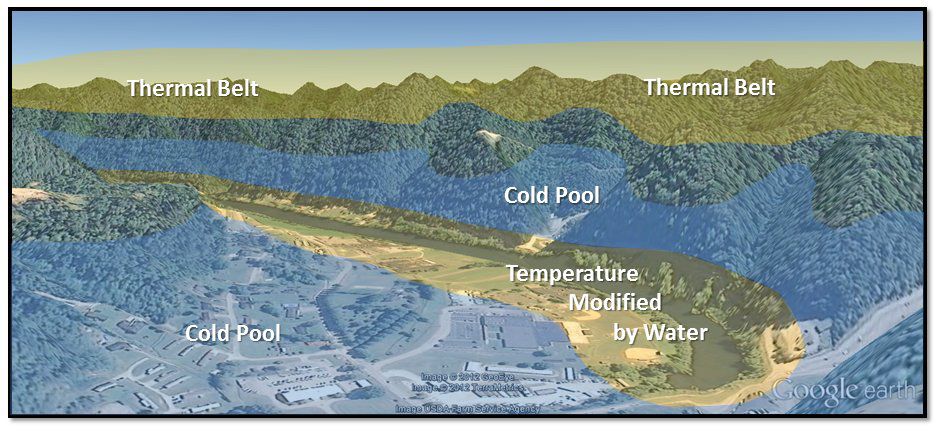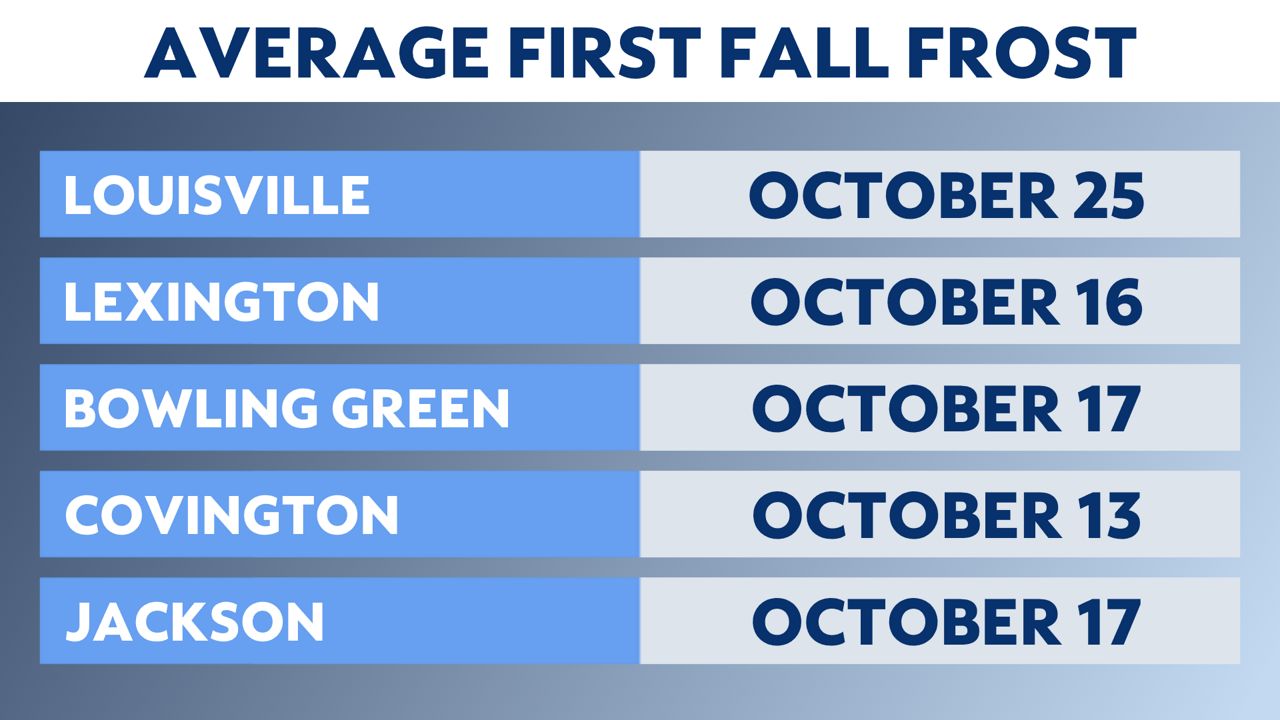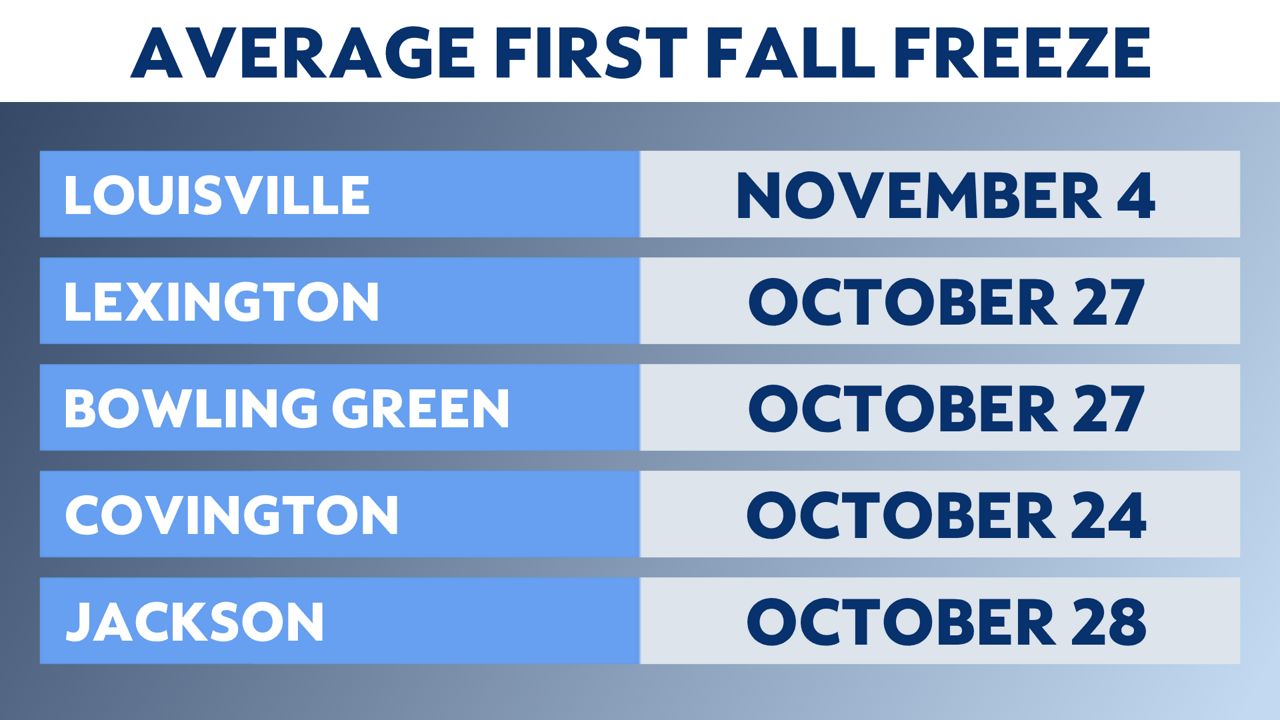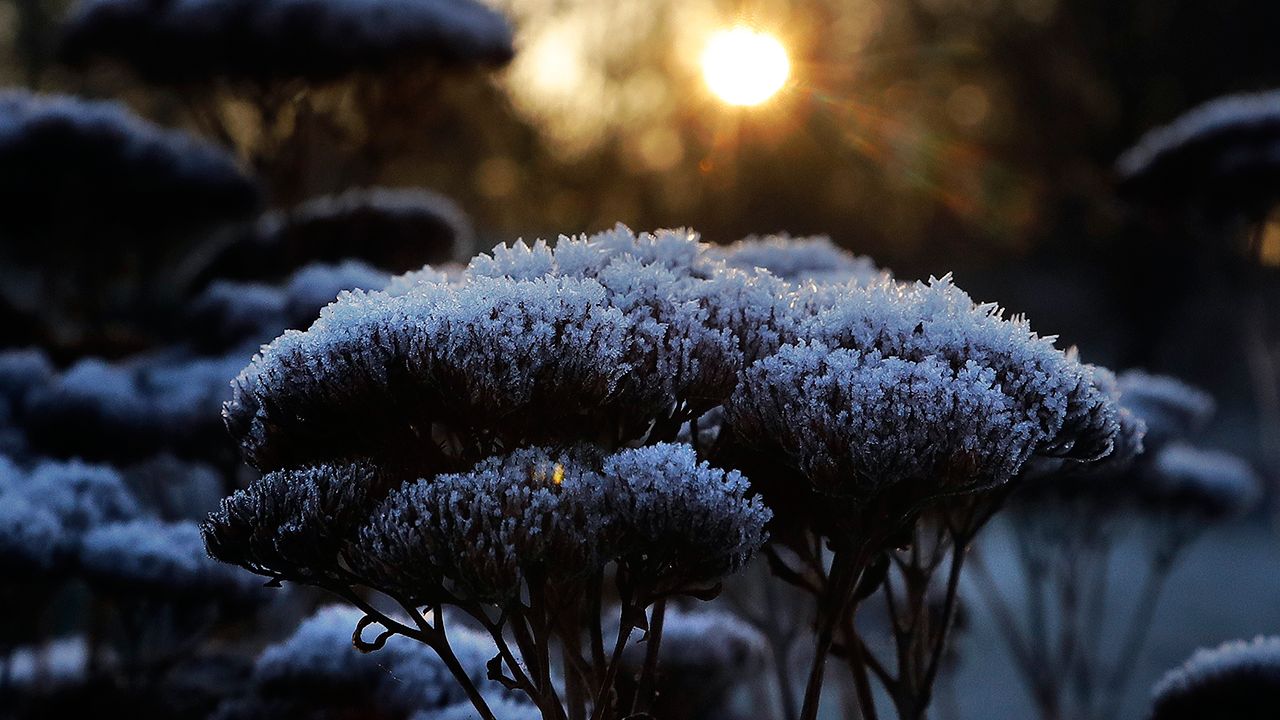It is that time of year when we starting picking out those perfect pumpkins and breaking out the long sleeves and pants near the fire as we enter the cooler fall months.
The first thing to note is there is a difference between a frost and a freeze. The National Weather Service issues Frost Advisories and Freeze Warnings when appropriate, until the end of the growing season. It is important to know the difference so you can plan on how to protect your plants accordingly.
This is issued when a widespread frost is expected. This usually occurs on a clear night with very light winds. Low temperatures fall near or slightly above freezing (33 to 36 degrees).
Valleys get colder in these situations since cold air is more dense and settles close to the ground. In fact, at ground level, temperatures can be 10 degrees colder than just above where the air temperature is taken. Air temperatures are typically measured at six feet above ground level.
This is issued when low temperatures are expected to be at or below 32 degrees across the region. The end of the growing season occurs when most of the area has reached 32 or below which usually occurs in late October to early November.
This is issued when there's the possibility that Freeze Warning criteria may be met at 24 to 48 hours out.

This illustration is what you find typically found during clear, calm nights in the mountainous terrain of east Kentucky. Also illustrated is an example of the surface temperature being modified due to a body of water.

These are the freeze thresholds, according to the Western Regional Climate Center:
- Light freeze: 29 to 32 degrees - tender plants are killed
- Moderate freeze: 25 to 28 degrees - destructive to most vegetation
- Hard freeze: Less than 25 degrees - severe damage to most plants




